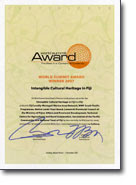Q1: Dear Million, could you briefly introduce yourself and the organisation you are working for?My name is Million Belay. I am Ethiopian. I am a graduate in Tourism and Conservation, currently doing PhD on bio-cultural diversity. I am the director of
MELCA Ethiopia.
Q2: In 2006 you attended a training on Participatory 3D Modelling (P3DM) organised by CTA in collaboration with ERMIS-Africa in Nessuit, Kenya. At that time what were your thoughts about the P3DM method?I was not sure about it. It did not strike me as something special. But after seeing how it has mobilized the knowledge of the local community, I was really impressed. I have some experiences in community mapping but P3DM was beyond my expectations. I still feel as if I know the Mau complex even if I did not visit it physically.
Q3: Did you think about replicating the P3DM process in Ethiopia?Yes very much. That was what was in my mind since I came from Kenya. I had to wait for the right time though.
Q4: How did you go about organising the exercise in Bale?The P3DM handbook (
Participatory 3D Modelling: Guiding Principles and Applications) was extremely useful. The website
www.iapad.org was also an excellent source of complementary information. I could get almost all of the answers from the handbook. My communication with Giacomo Rambaldi from CTA was a huge help. Our face to face discussion in at the IUCN World Congress in Barcelona also helped a lot, although one has to live through the experience to really understand it. I had to use substitutions for the materials suggested in the guide. I had to encounter a difficulty to understand what some of the recommended inputs were meant to serve for. Every bit was a challenge and meeting those challenges was an exhilarating experience.
Q5: You have now undergone a P3DM process in the role of lead facilitator. What are your most important considerations in terms of participation of knowledge holders in the process?I think that P3DM is an excellent tool for community participation. The first group of participants was challenged. We had about seven groups. We prepared the map legend before the model has started. After it was assembled, we invited the first community and asked them for a feedback. They changed some legend items. There was a heated argument about the location of some of the rivers. We had forgotten to put one mountain on the Model and that has resulted in some confusion. One mountain was incorrectly named on the source map and this generated a lot of discussion. But local knowledge holders corrected the name. Later on a cartographer confirmed that the source map was incorrect. The women were very strong. They would not accept what the men were suggesting. The men had to reconcile. There was no bystander. The youth and children also participated in the discussions. They were suggesting the names of some of the places and checking these with the elders. It was a fascinating exercise. Local Government officials participated as well. The mayor of the small town said, for example, that if we need to construct a house to place the model, he will give us land. So I found the model to be a social catalyst.
Q6: Did you collect feedback from participants? If yes, which one were the most revealing statements?Yes! Most of the participants stated that the model revealed them a broader landscape. There were many sad comments also.
One elder stated that “You see I know that the area where I live is degrading. Forests are disappearing. I used to tell myself that ... well, it is only here. The other part of Bale is fine ... But after I saw the model, I could see that Bale in general is degrading. Forests are disappearing. Agriculture is expanding. Grazing areas are disappearing. I really feel very sad and alarmed.
A woman said “Well, as a woman I am not expected to go far. I only know some water points and areas where I collect fire wood. I also know villages of my relatives. Now I can see a larger landscape. Through the discussion I now understand what the Bale Mountains look like. This has broadened my understanding of what we have and what our problems are.”
An elder stated “You know we used to have big forests that we protect through out beliefs. Nobody touches these forests. Now I hear that this practice is rapidly declining. We are loosing our forests because of this. This generation does not understand the value of these things. They ridicule it. I can see that Bale is becoming naked. It is as shameful as undressing a women in public.”
Q7: How would you describe women’s participation compared to the one you observed in Nessuit, Kenya?
Women participated actively.
They did not wait till the men went for lunch, like it happened in Kenya. They were fighting every bit for their voice to be heard. We have asked deliberately for women to be included among participants. They were so proud that they were invited. They also had more specific knowledge about some areas including rituals related to crossing points on a river.
I was amazed by their active participation as Bale is mainly Muslim and women are usually marginalized.
Q8: Who is going to safeguard and update the 3D model which is now hosted at the Dinsho School?The model was officially handed over to the school. So presently the school will be the guard. But there is a discussion among MELCA and the other government officials that we should construct a house for it and host it in a larger and protected space. MELCA has a soil and water conservation as well as environmental education program in Bale. So we will use the model for this purpose. We are going to organize a three-day planning workshop on how best to use the model. The event will help us on how to best to use the model and how to continuously update it.
Q9: Are there any plans for extracting and digitizing the data visualised on the model? If so, what will be the role of the community in the process and in the management of the resulting data sets?Yes there will be digitizing the data. There will be discussion with the community which layers they want to show and which to maintain confidential. We will also handover the printed maps to whomever they chose. We will also have a discussion with them on where to store the data. We have explained to them the purpose of the model and they have agree to participate in the process and are so glad that it was done.
Q10: Do you plan to facilitate the replication of the P3DM process elsewhere in Ethiopia?Yes. We will do two models in Ethiopia probably in June and July 2009. We will see how it goes and will replicate it in other locations as well. What is so exciting is that our partners in the other parts of the Bale Mountains are planning to adopt the P3DM process as well. It is self replicating, it seems.
 A 3D model of the Mutton Hole Wetlands near Normanton has been developed as a starting point for community consultation and discussion about how best to preserve and use the Mutton Hole Wetlands.
A 3D model of the Mutton Hole Wetlands near Normanton has been developed as a starting point for community consultation and discussion about how best to preserve and use the Mutton Hole Wetlands.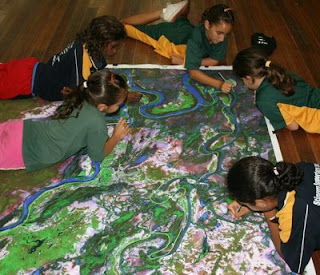 The management plan will highlight Aboriginal culture as well as the environmental values of the wetland in a plan to conserve it for future generations. There is strong support from the scientific and local community for use of the wetlands for bird watching, teaching and eco-tourism. As a step towards greater community consultation a model of the wetland area was built and is now located in the Normanton Visitor Information Centre (Burns Philp Building).
The management plan will highlight Aboriginal culture as well as the environmental values of the wetland in a plan to conserve it for future generations. There is strong support from the scientific and local community for use of the wetlands for bird watching, teaching and eco-tourism. As a step towards greater community consultation a model of the wetland area was built and is now located in the Normanton Visitor Information Centre (Burns Philp Building). Since mid-May 2009 the model has been displayed at the Normanton Visitors Information Centre and on Thursday 21st May there was a formal public opening when students, parents and interested community members came to see what the schools had been working on. The exhibition was opened by Vicki Jones of Northern Gulf, along with Isla Grundy of CSIRO and Agnes Hughes from Normanton State School. The forty or so people who attended were able to take a closer look at the model and discuss wetland history and potential use. The community at large was invited to give it’s opinions and ideas on how the Mutton Hole Wetlands should be managed and used in the future through individual community consultations and group discussions held at the Information Centre.
Since mid-May 2009 the model has been displayed at the Normanton Visitors Information Centre and on Thursday 21st May there was a formal public opening when students, parents and interested community members came to see what the schools had been working on. The exhibition was opened by Vicki Jones of Northern Gulf, along with Isla Grundy of CSIRO and Agnes Hughes from Normanton State School. The forty or so people who attended were able to take a closer look at the model and discuss wetland history and potential use. The community at large was invited to give it’s opinions and ideas on how the Mutton Hole Wetlands should be managed and used in the future through individual community consultations and group discussions held at the Information Centre.


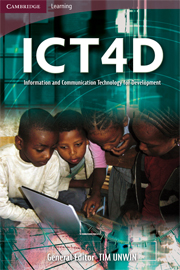
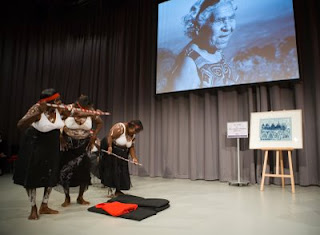

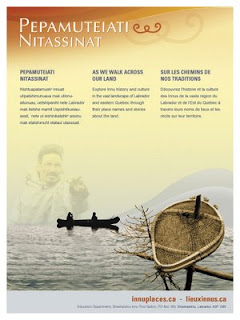


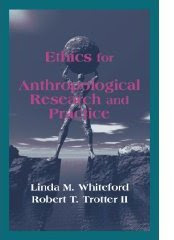
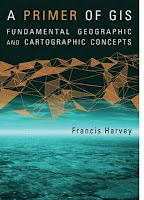
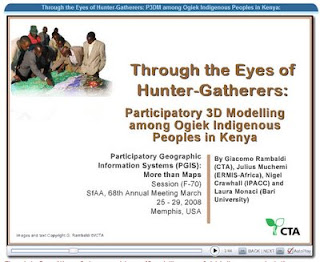

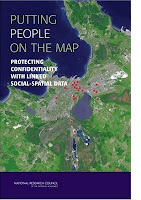
 An Atlas of Radical Cartography
An Atlas of Radical Cartography 

